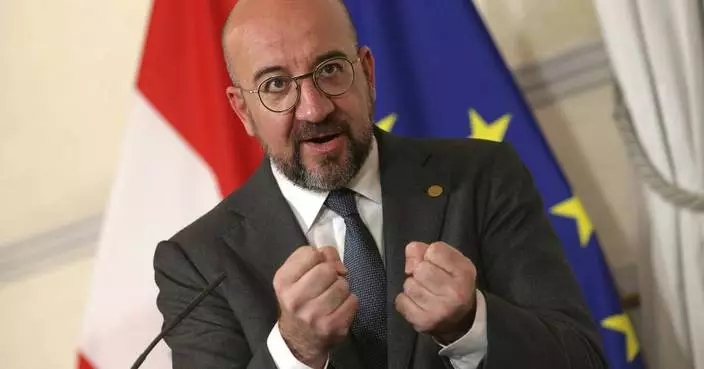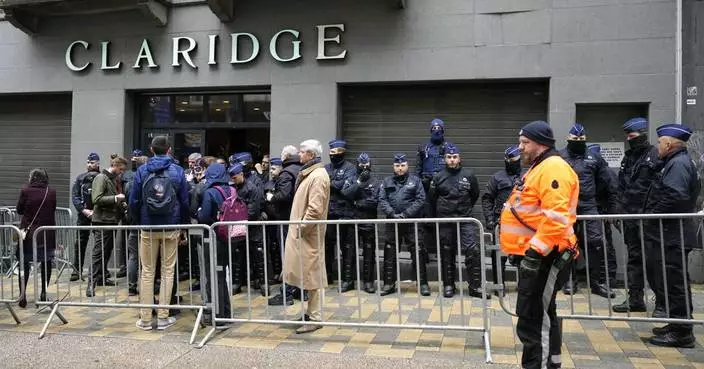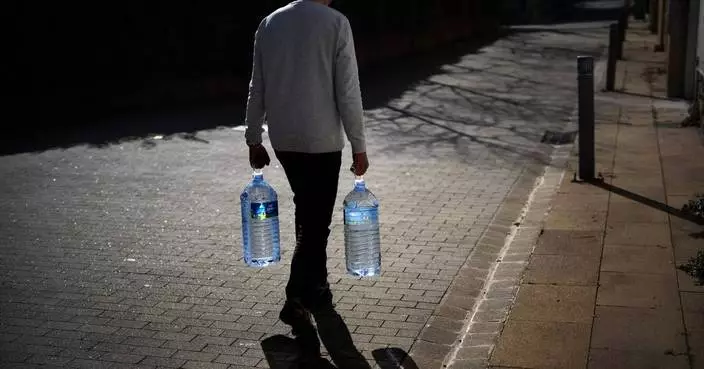The European Union describes wildfires as "a serious and increasing threat" across the continent.
Most alarmingly, forest blazes are growing in intensity, especially in southern countries such as Greece, Spain, France, Italy and Portugal but also in Scandinavia.
Click to Gallery
The European Union describes wildfires as "a serious and increasing threat" across the continent.
Here's a look at Europe's wildfire problem.
Portugal suffers more than most, recording over 18,000 wildfires a year since 2007. Huge blazes in 2017 killed at least 106 people.
These extreme blazes are characterized by the rapid spread of flames, intense burning, unpredictable shifts in direction and embers that are carried far away.
In Western Europe, people have been leaving the land and moving to the cities.
Experts warn the continent needs to get ready for blazes that reach a massive new scale. These superfires, or mega-fires, are catastrophic events that kill and blacken broad areas and are hard to stop.
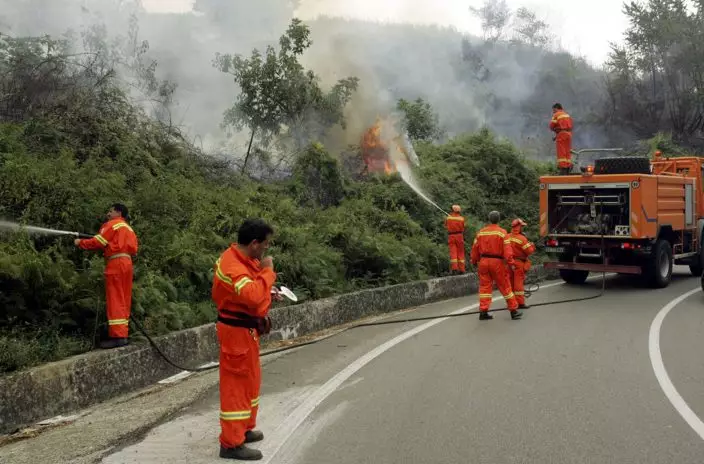
FILE - In this file photo dated Wednesday, July 25, 2007, firemen spray water over a wild fire in the Mount Pollino area, southern Italy, as some dozens of fires were raging in central and southern Italy with four people reported killed and destroying hundreds of hectares (acres) of forest. According to an EU report released in 2018, authorities are still using traditional methods to fight fires, relying on water to extinguish flames instead of investing in long-term efforts needed for prevention. (AP PhotoMario Tosti, FILE)
Here's a look at Europe's wildfire problem.
WHAT'S HAPPENING?
Between 2000 and 2017, 611 firefighters and civilians died in wildfires in European Union countries, with economic damage calculated at more than 54 billion euros ($60.5 billion).
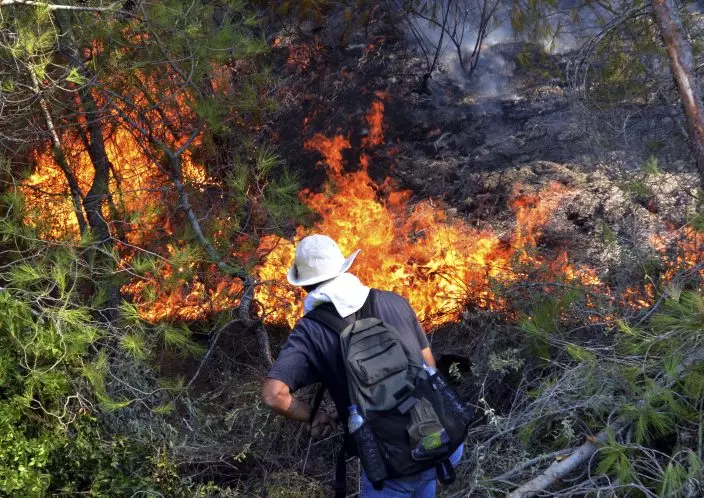
FILE - In this file photo dated Sunday July 28, 2013 a local man helps to fight a wildfire in southern Rhodes, Greece, after authorities declared a state of emergency on the holiday island after a weekend fire destroyed an estimated 4,000 hectares of forest and farmland. In 2019, experts say authorities must shift their firefighting focus from suppression to prevention, including the regular thinning of forests, creating fire breaks, introducing more climate-resilient plant species and education. (AP PhotoNicolas Nanev, FILE)
Portugal suffers more than most, recording over 18,000 wildfires a year since 2007. Huge blazes in 2017 killed at least 106 people.
Though the European trend is for fewer blazes and smaller areas charred, except in Portugal, bigger and meaner forest fires are stretching emergency assets and government budgets.
Added to that, the peak fire season is becoming longer, extending into June and October, with an increasing number of mega-fires.
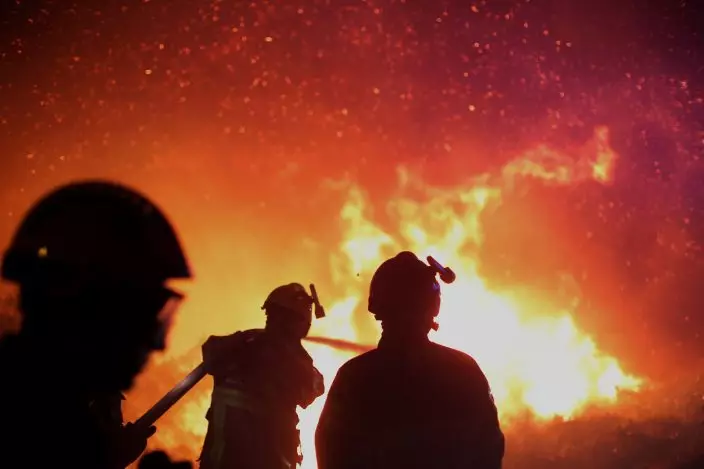
FILE - In this file photo dated Tuesday, July 25, 2017, firefighters spray water as they try to douse a fire near the village of Biguglia, Corsica island, France, as some hundreds of firefighters battle blazes fanned by high winds in more than a dozen zones in the Riviera region of southern France. European Union experts warn the continent needs to get ready for blazes that reach a massive new scale. (AP PhotoRaphael Poletti, FILE)
These extreme blazes are characterized by the rapid spread of flames, intense burning, unpredictable shifts in direction and embers that are carried far away.
But according to an EU report last year, authorities are still using traditional methods to fight fires, relying on water to extinguish flames instead of investing in long-term efforts needed for prevention.
WHAT'S CAUSING IT?
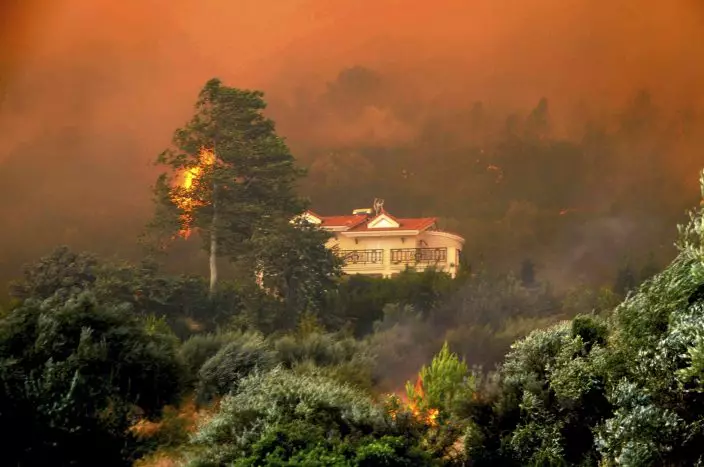
FILE - In this file photo dated Wednesday, July 18, 2012, a house is surrounded by flames during a wildfire near Patras, Greece, as regional authorities declared an emergency in southwestern Greece as nine planes and one helicopter were involved in the firefighting effort. Conifer forests and eucalyptus plantations are common in Europe and burn fiercely as climate change has bought severe droughts leaving forests tinder-dry and facilitating blazes. (AP PhotoGiannis Androutsopoulos, FILE)
In Western Europe, people have been leaving the land and moving to the cities.
Abandoned fields, pastures and forests have been left to themselves, becoming overgrown with what turns into fuel for wildfires.
Instead of a properly tended patchwork of different vegetation, some of which is more fire-resistant, large areas of countryside have dense and continuous forest cover which benefit and propagate blazes.
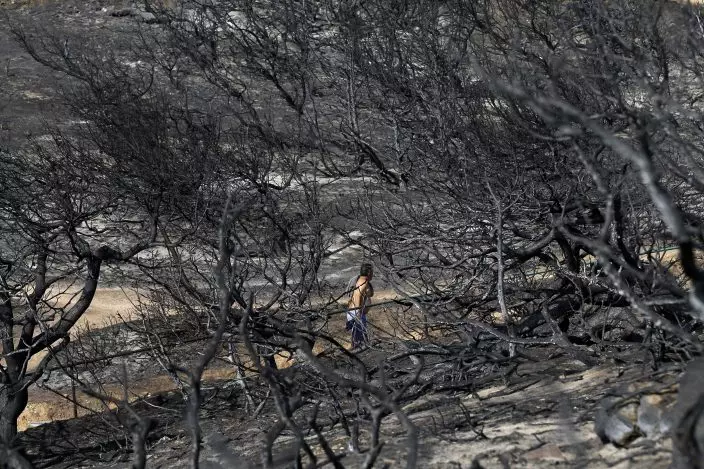
FILE - In this file photo dated Wednesday, Aug. 1, 2018, a man leaves a beach in Rafina, east of Athens, some ten days after a wildfire swept through the area leaving 76 people killed by Greece's deadliest wildfire in decades. Between 2000 and 2017, 611 firefighters and civilians died in wildfires in European Union countries, with economic damage calculated at more than 54 billion euros (dollars 60.5 billion). (AP PhotoThanassis Stavrakis, FILE)
Conifer forests and eucalyptus plantations, which provide income for landowners, are common and burn fiercely.
The spread of urban areas, meanwhile, has brought homes close to forests, and danger lies in the proximity.
In Greece last summer, an additional hazard came from lax oversight of urban planning. Illegally constructed buildings in woodland and coastal areas were a contributing factor in the deaths of 101 people in Mati, outside of Athens, where many drowned as they tried to swim away from intense heat and smoke engulfing beaches.
More severe droughts nowadays are leaving forests tinder-dry. Spells of unusually high temperatures are also facilitating blazes. Both of those challenges have come with climate change, with scientists saying that Sahara-like conditions are jumping the Mediterranean Sea into southern Europe.
Forest management policies work on a decades-long timescale and need to be more adaptable, EU authorities say.
Prevention "does not receive the necessary emphasis and funding compared to fire suppression," according to the EU, while "the preparedness of agencies and communities to deal with extreme fire events is often far from optimal."
WHAT CAN BE DONE?
Experts say authorities must shift their firefighting focus from suppression to prevention, taking into account aspects such as climate adaptation, education and preparedness.
That includes the regular thinning of forests and undergrowth; creating fire breaks; introducing more climate-resilient plant species; and ensuring diversified forests.
Preventively setting fire to countryside, called "prescribed burning," is regarded as an efficient prevention technique but is controversial in some countries. Greece prohibits it while others, such as France, Portugal and some regions of Spain and Italy allow it under certain conditions.
Technology is also being developed to help fight wildfires, including drones for detection, quick responses, mapping and assessing fire dynamics.
But the EU notes that fire management in Europe is "not making full use of the knowledge and innovation delivered by scientific projects."
The EU is urging governments to get a better grasp of how climate change is affecting their countries.
The European Forest Institute, established by 29 European countries, struck a gloomy note last year.
If authorities don't change the make-up of the countryside, the EFI said in a report, emergency services won't be able to stop what experts refer to as "6th generation wildfires" — commonly known as fire storms.
PARIS (AP) —
Reuters photographer Mohammed Salem captured this year’s prestigious World Press Photo of the Year award Thursday with a depiction of loss and sorrow in Gaza, a heartrending photo of a Palestinian woman cradling the body of her young niece. The photograph, taken in Khan Younis just days after Salem’s own child was born, shows 36-year-old Inas Abu Maamar holding five-year-old Saly, who was killed along with her mother and sister when an Israeli missile struck their home.
Salem, who is Palestinian, described this photo filed Nov. 2 last year, as a “powerful and sad moment that sums up the broader sense of what was happening in the Gaza Strip.”
The image ”truly encapsulates this sense of impact,” said global jury chair Fiona Shields, The Guardian newspaper's head of photography. “It is incredibly moving to view and at the same time an argument for peace, which is extremely powerful when peace can sometimes feel like an unlikely fantasy,” she added.
The World Press Photo jury praised the shot’s sense of care and respect and its offering of a “metaphorical and literal glimpse into unimaginable loss.”
This is not the first time Salem has been recognized for his work on the Israeli-Palestinian conflict; he received a World Press Photo award more than a decade ago for another depiction of the human toll of conflict in the Gaza strip.
In the three other global categories announced Thursday, South Africa’s Lee-Ann Olwage won Photo Story of the Year for her touching series “Valim-babena,” featured in GEO magazine. The project focused on the stigmatization of dementia in Madagascar, a topic she explored through intimate portraits of “Dada Paul” and his family. Lack of public awareness surrounding dementia means that people displaying symptoms of memory loss are often stigmatized.
In the series, “Dada Paul,” who has lived with dementia for 11 years, is tenderly cared for by his daughter Fara. One of the standout images in the series shows him preparing for church with his granddaughter Odliatemix, capturing moments of normalcy and warmth amidst the challenges of dementia.
Photographer Alejandro Cegarra, a Venezuelan native who migrated to Mexico in 2017, won the Long-Term Project award for “The Two Walls,” published by The New York Times and Bloomberg. Cegarra’s project, initiated in 2018, examines a shift in Mexico’s immigration policies, which have moved from being historically open to enforcing strict regulations at its southern border. The jury said the photographer's perspective as a migrant gave it a “sensitive," human-centered perspective, according to a press release.
Julia Kochetova of Ukraine won the Open Format award for “War Is Personal.” The project stood out from coverage of the ongoing conflict by offering a personal look at the harsh realities of war. On a dedicated website, she merged traditional photojournalism with a diary-like documentary style, incorporating photography, poetry, audio clips and music.
The Associated Press won the Open Format award in the regional Africa category with the multimedia story “Adrift,” created by journalists Renata Brito and Felipe Dana. The story investigates the fate of West African migrants who attempted to reach Europe via a treacherous Atlantic route but ended up on a ghost ship discovered off Tobago. The team’s compelling use of photography, cinematography and detailed narrative, enhanced by expert design and multimedia elements, highlights the perils faced by migrants and the human stories behind global migration issues.
The Associated Press' Ebrahim Noroozi won the Asia Stories award for his series “Afghanistan on the Edge,” which documents the country since the Taliban took over in August 2021.
World Press Photo is an independent, nonprofit organization based in the Netherlands, founded in 1955.

This image provided by World Press Photo is part of a series titled Afghanistan on the Edge by Ebrahim Noroozi, Associated Press, which won the World Press Photo Asia Series category and showsAn Afghan refugee rests in the desert next to a camp near the Torkham Pakistan-Afghanistan border, in Torkham, Afghanistan, Friday, Nov. 17, 2023. A huge number of Afghans refugees entered the Torkham border to return home hours before the expiration of a Pakistani government deadline for those who are in the country illegally to leave or face deportation. (AP Photo/Ebrahim Noroozi)
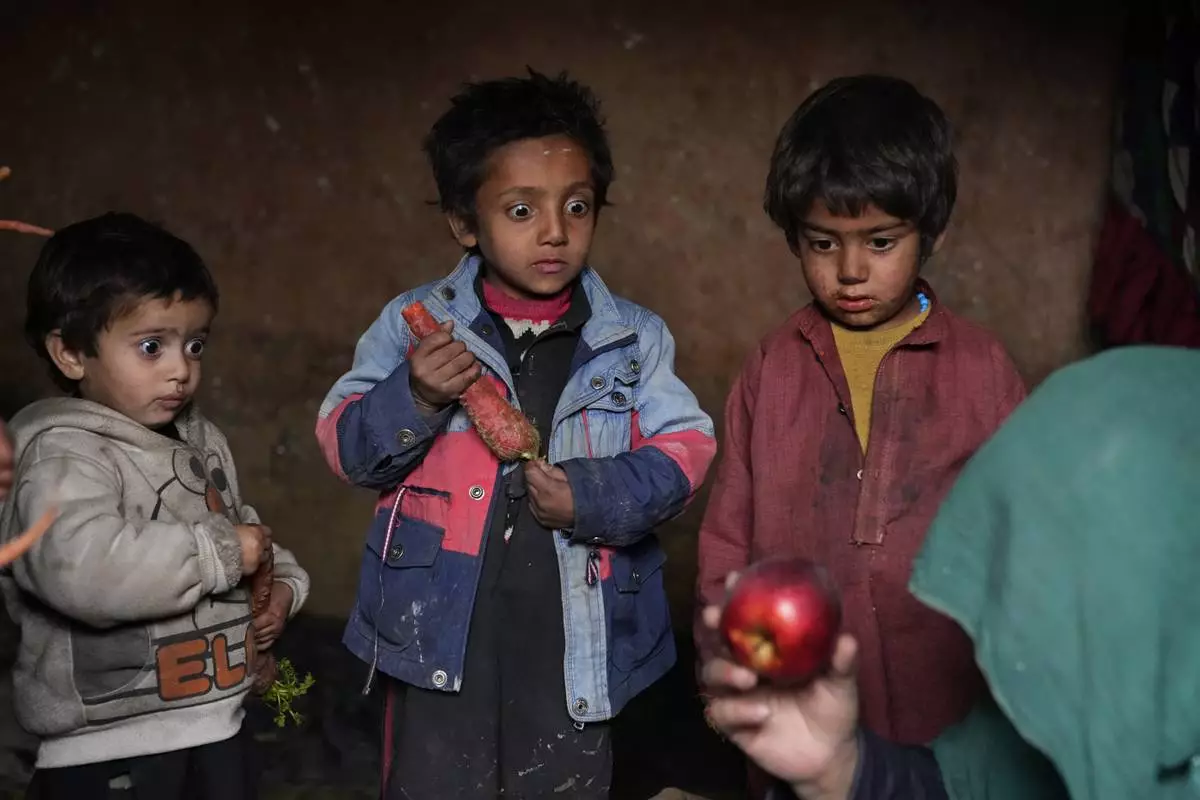
This image provided by World Press Photo is part of a series titled Afghanistan on the Edge by Ebrahim Noroozi, Associated Press, which won the World Press Photo Asia Series category and shows : Since the chaotic Taliban takeover of Kabul on Aug. 15, 2021, an already war-devastated economy once kept alive by international donations alone is now on the verge of collapse. There isn't enough money for hospitals. The World Health Organization is warning of millions of children suffering malnutrition, and the U.N. says 97% of Afghans will soon be living below the poverty line. Three Afghan internally displaced children look with surprise at an apple that their mother brought home after begging, in a camp on the outskirts of Kabul, Afghanistan, Thursday, Feb 2, 2023. (AP Photo/Ebrahim Noroozi)

This image provided by World Press Photo is part of a multimedia project by Associated Press' Renata Brito and Felipe Dana titled Adrift, won the World Press Photo Africa Regional Winner Open Format category and shows a mortuary technician opening the door of a refrigerator used to store the remains of migrants recovered from inside the Mauritania boat that appeared drifting near the island of Tobago, in Scarborough, Trinidad and Tobago, Tuesday, Jan. 25, 2022. In May 2021 a boat from Mauritania full of dead men was found off the coast of the Caribbean Island of Tobago. Who were these men and why were they on the other side of the Atlantic Ocean? Two visual journalists sought answers, uncovering a story about migrants from West Africa who seek opportunity in Europe via an increasingly popular but treacherous Atlantic route. (AP Photo/Felipe Dana)
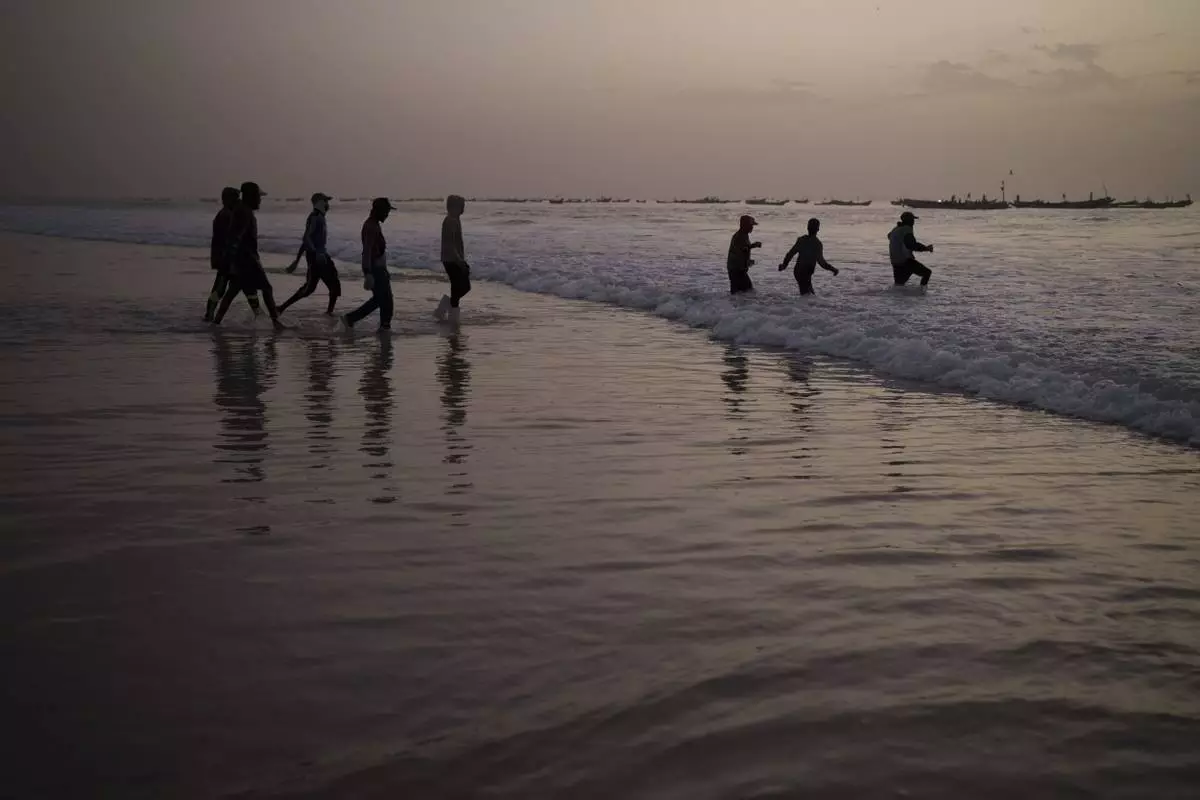
This image provided by World Press Photo is part of a multimedia project by Associated Press' Renata Brito and Felipe Dana titled Adrift, won the World Press Photo Africa Regional Winner Open Format category and shows young fishermen walk into the ocean to board an artisanal fishing boat in Nouakchott, Mauritania, Friday, Dec. 10, 2021. In May 2021 a boat from Mauritania full of dead men was found off the coast of the Caribbean Island of Tobago. Who were these men and why were they on the other side of the Atlantic Ocean? Two visual journalists sought answers, uncovering a story about migrants from West Africa who seek opportunity in Europe via an increasingly popular but treacherous Atlantic route. (AP Photo/Felipe Dana)

This image provided by World Press Photo is part of a multimedia project by Associated Press' Renata Brito and Felipe Dana titled Adrift, won the World Press Photo Africa Regional Winner Open Format category and shows Moussa Sako, an asylum-seeker from Mali, who survived 22 days aboard a Mauritanian boat drifting in the Atlantic Ocean covers his face during an interview with the Associated Press in Guadalajara, Spain, Sunday, Nov. 14, 2021. In May 2021 a boat from Mauritania full of dead men was found off the coast of the Caribbean Island of Tobago. Who were these men and why were they on the other side of the Atlantic Ocean? Two visual journalists sought answers, uncovering a story about migrants from West Africa who seek opportunity in Europe via an increasingly popular but treacherous Atlantic route. (AP Photo/Felipe Dana)

This image provided by World Press Photo and taken by Julia Kochetova is part of a series titled War is Personal which won the World Press Photo Open Format Award. Amidst tens of thousands of civilian and military casualties and an effective stalemate that has lasted for months, there are no signs of peace on the horizon for Russia's war in Ukraine. While news media updates its audience with statistics and maps, and international attention drifts elsewhere, the photographer has created a personal website that brings together photojournalism with the personal documentary style of a diary to show the world what it is like to live with war as an everyday reality. (Julia Kochetova/World Press Photo via AP)

This image provided by World Press Photo and taken by Julia Kochetova is part of a series titled War is Personal which won the World Press Photo Open Format Award and shows a stabilization point near Bakhmut, Ukraine, of the 5th assault brigade and 77th brigade. Hospitalliers battalion - volunteer battalion of combat medics are helping here. Amidst tens of thousands of civilian and military casualties and an effective stalemate that has lasted for months, there are no signs of peace on the horizon for Russia's war in Ukraine. While news media updates its audience with statistics and maps, and international attention drifts elsewhere, the photographer has created a personal website that brings together photojournalism with the personal documentary style of a diary to show the world what it is like to live with war as an everyday reality. (Julia Kochetova/Der Spiegel/World Press Photo via AP)
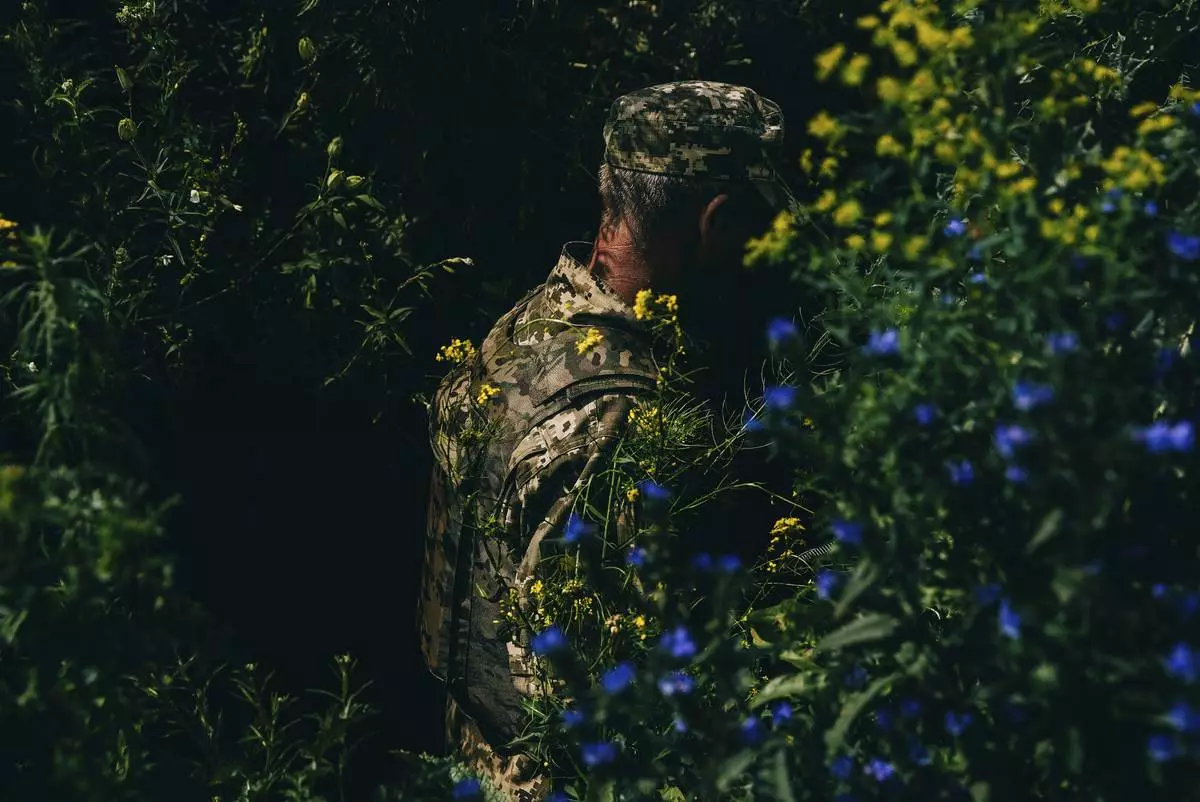
This image provided by World Press Photo and taken by Julia Kochetova is part of a series titled War is Personal which won the World Press Photo Open Format Award and shows the training of mobilized conscripts of 68th brigade in Donetsk region, not far from frontline. 68th brigade recently liberated Blagodatne village during the Ukrainian counter-offensive. The instructors came from US, working for NGO "Saber".Amidst tens of thousands of civilian and military casualties and an effective stalemate that has lasted for months, there are no signs of peace on the horizon for Russia's war in Ukraine. While news media updates its audience with statistics and maps, and international attention drifts elsewhere, the photographer has created a personal website that brings together photojournalism with the personal documentary style of a diary to show the world what it is like to live with war as an everyday reality. (Julia Kochetova/Der Spiegel/World Press Photo via AP)
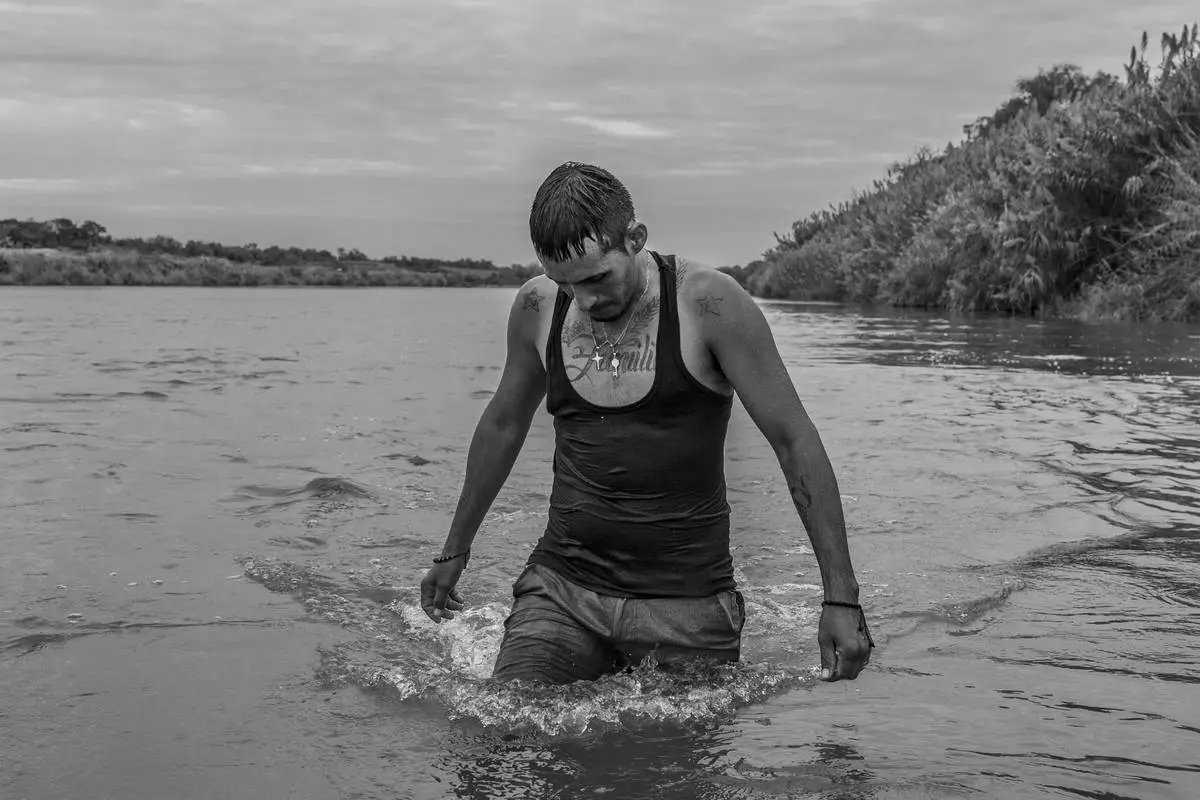
This image provided by World Press Photo and taken by Alejandro Cegarra for The New Times/Bloomberg is part of a series titled The Two Walls which won the World Press Photo Long-Term Project Award and shows Carlos Mendoza, a Venezuelan migrant, crossing the Rio Grande river to seek asylum in the United States. Piedras Negras, Mexico, 7 October 2023. (Alejandro Cegarra/The New York Times/Bloomberg/World Press Photo via AP)
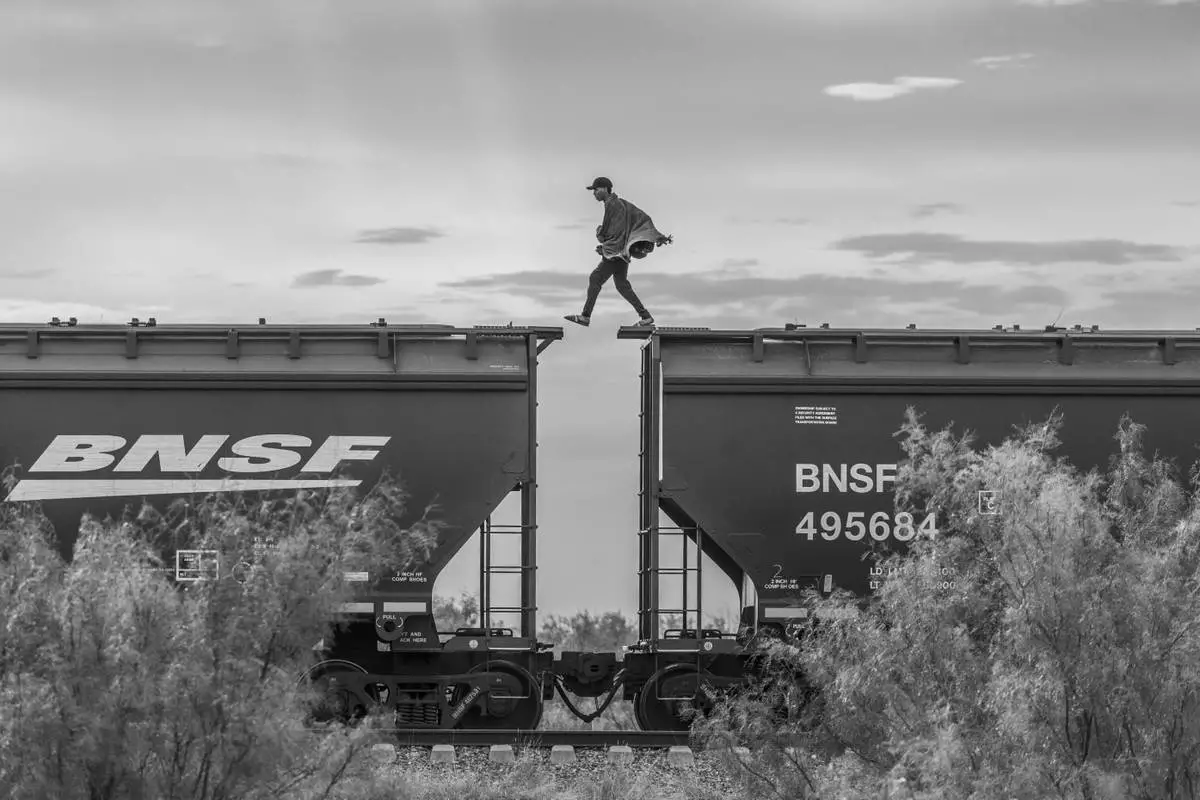
This image provided by World Press Photo and taken by Alejandro Cegarra for The New Times/Bloomberg is part of a series titled The Two Walls which won the World Press Photo Long-Term Project Award and shows a migrant walking atop a freight train known as "The Beast." Migrants and asylum seekers lacking the financial resources to pay a smuggler often resort to using cargo trains to reach the United States border. This mode of transportation is very dangerous; over the years, hundreds have fallen onto the tracks and have been killed or maimed. Piedras Negras, Mexico, 8 October 2023. (Alejandro Cegarra/The New York Times/Bloomberg/World Press Photo via AP)
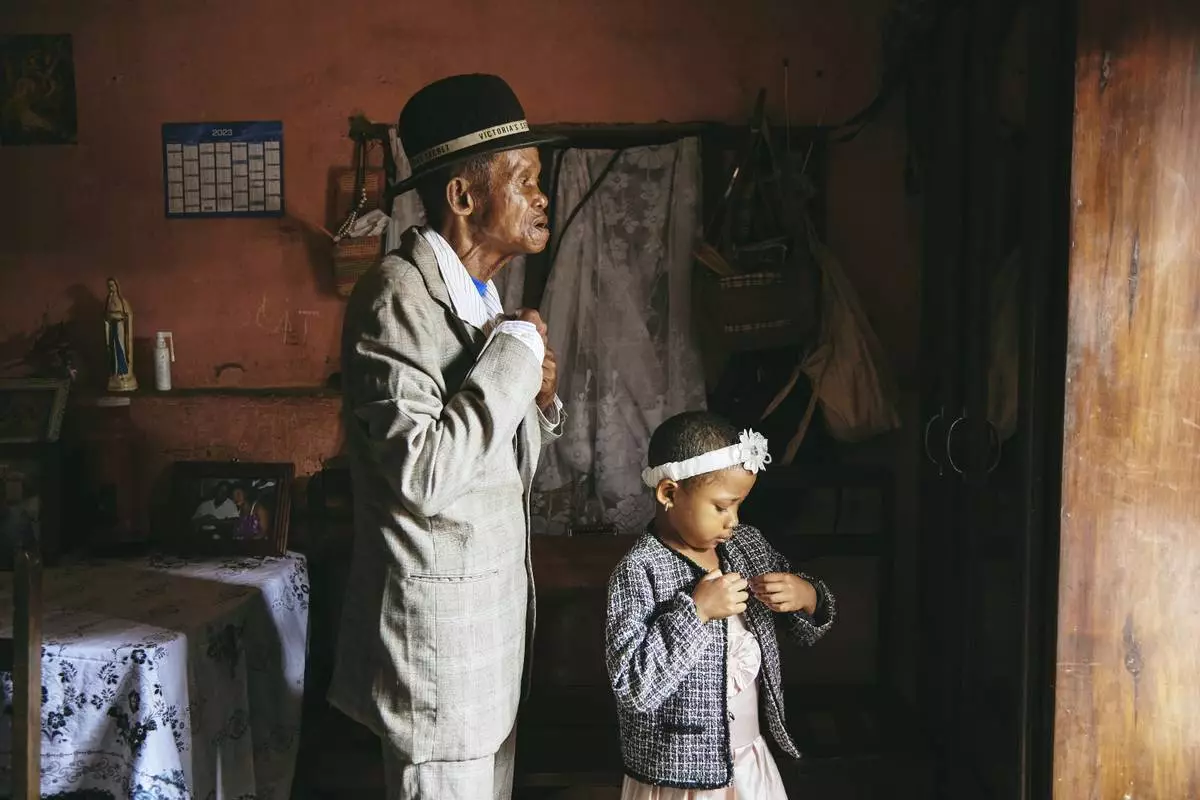
This image provided by World Press Photo and taken by Lee-Ann Olwage for GEO is part of a series titled Valim-babena which won the World Press Photo Story of the Year Award and shows Dada Paul Rakotazandriny (91), who is living with dementia, and his granddaughter, Odliatemix Rafaraniriana (5), get ready for church on Sunday morning at his home in Antananarivo, Madagascar. 12 March 2023. (Lee-Ann Olwage/Geo/World Press Photo via AP)
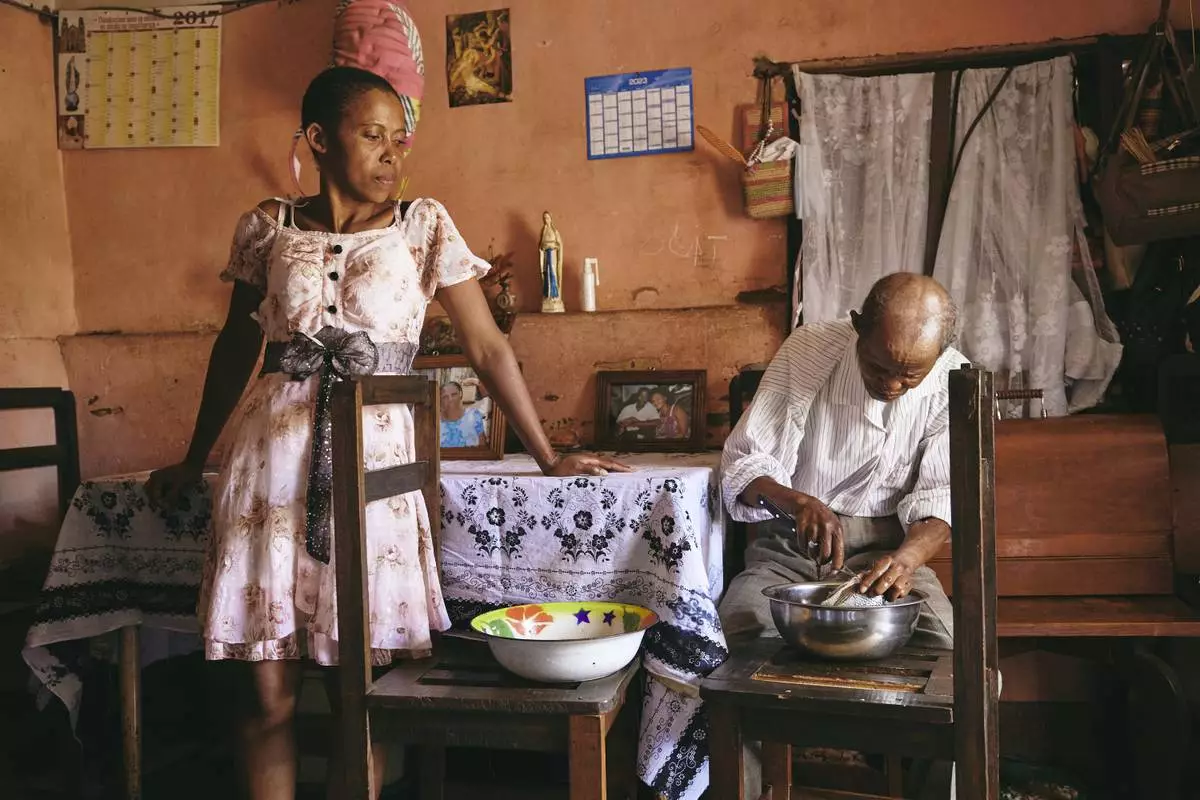
This image provided by World Press Photo and taken by Lee-Ann Olwage for GEO is part of a series titled Valim-babena which won the World Press Photo Story of the Year Award and shows Joeline (Fara) Rafaraniriana (41) watches her father, Dada Paul Rakotazandriny (91) clean fish at home on Sunday afternoon. A typical Sunday consists of the family attending church in the morning and spending time together in the afternoon. Fara works during the week and as the sole provider and carer for her daughter and father struggles to manage all her responsibilities in the absence of assistance by her siblings who live close by. Mandrosoa Ivato, Antananarivo, Madagascar. 12 March 2023. (Lee-Ann Olwage/Geo/World Press Photo via AP)
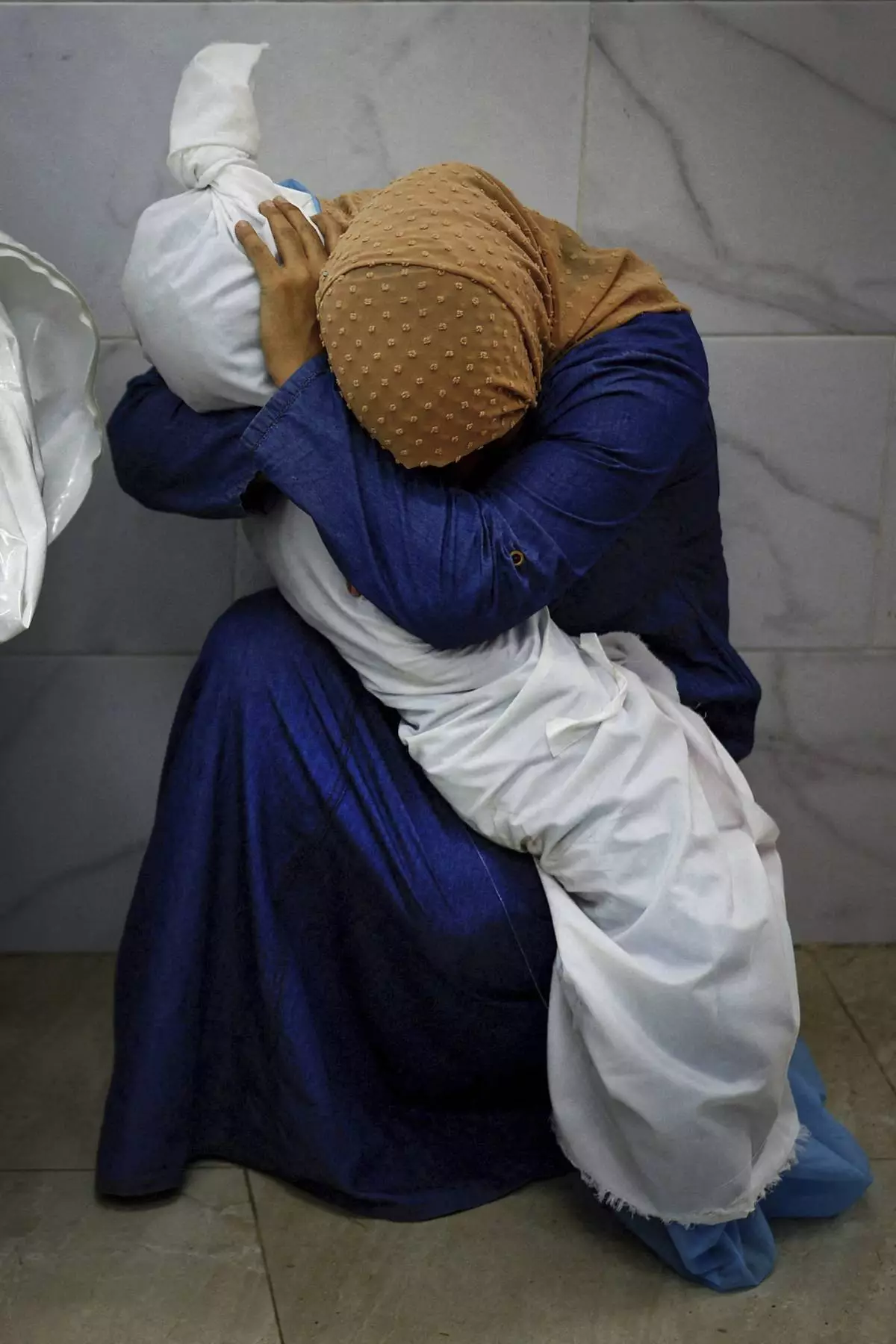
This image provided by World Press Photo and taken by Mohammed Salem of the Reuters news agency won the World Press Photo Award of the Year and shows Palestinian woman Inas Abu Maamar, 36, embracing the body of her 5-year-old niece Saly, who was killed in an Israeli strike, at Nasser hospital in Khan Younis in the southern Gaza Strip, October 17, 2023. (Mohammed Salem/Reuters/World Press Photo via AP)






















